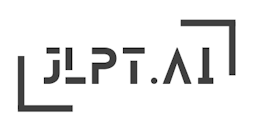

N1
音読み:katsu
訓読み:kawa.ku, kawa.kasu
カツkatsu
かわ.くkawa.ku
かわ.かすkawa.kasu
Thirst, desire
Imagine a person being extremely thirsty, desperately searching for water to quench their thirst. This represents the strong desire or thirst symbolized by the kanji '渇'.
The kanji '渇' is a less frequent character compared to others in the JLPT N1 level. However, it may appear in vocabulary or reading exercises that focus on nuanced meanings and vocabulary expansion.
水を飲むことで渇きを癒すことができる。
You can quench your thirst by drinking water.
みずをのむことでかわきをいやすことができる。
mizu o nomu koto de kawaki o iyasu koto ga dekiru.
彼は知識に渇望していた。
He had a strong desire for knowledge.
かれはちしきにかつぼうしていた。
kare wa chishiki ni katsubou shiteita.
日本の夏はとても暑くて、渇きを感じます。
Japanese summers are very hot, and you feel thirsty.
にほんのなつはとてもあつくて、かわきをかんじます。
nihon no natsu wa totemo atsukute, kawaki o kanjimasu.